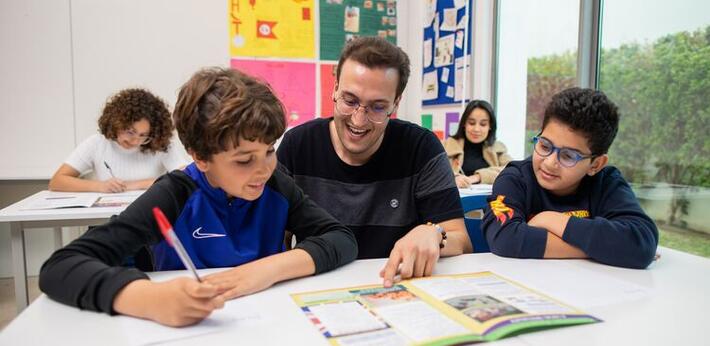You are here
Home ›13/11/2015
China unveils 3-year plan for higher vocational education
Summary:
China’s Ministry of Education announced a three-year action plan for higher vocational education on 3 November 2015. The plan, titled Action Plan for the Innovative Development of Tertiary Vocational Education (2015-2018), lays out a roadmap for developing China’s tertiary vocational education sector in the next three years. The main elements of the plan, outlined below, include increasing the autonomy of higher vocational institutions and increasing the focus on quality rather than total enrolment.
The plan sets out six key priority areas for changes in the vocational education field
• The autonomy of tertiary vocational institutions will be increased
• There will be a stronger focus on the quality of tertiary vocational institutions, rather than expanding capacity.
• Vocational education will be more open, with increased industry involvement, a more flexible credit system, and more paths to entry, especially for students who are already in the workforce
• Quality assurance will be prioritized, with a shift in focus from numerical targets for infrastructure and facilities to concentrate more on the quality of students’ learning experience. Internal quality assurance mechanisms will also be strengthened or introduced.
• Lecturers will be encouraged to have both teaching qualifications and skills qualifications, with more support for hiring experienced professionals as part-time trainers.
• Teaching, training and applied research will become more relevant to society, with a greater focus on industry links, modern apprenticeships and applied R&D.
The plan then sets out 65 specific tasks and 22 targets. The tasks include:
• Improve the structure of the curriculum by reforming teaching and building greater connections to industry.
• Develop a few leading vocational colleges.
• Encourage international cooperation, including joint educational programmes/institutions; importing qualification standards, curriculums and digital resources; joint curriculum development; setting up joint labs or training centres; and teacher and student exchanges.
• Improve teaching capacity.
• Promote digital technology in vocational education
• Improve the structure of tertiary vocational education to improve pathways between vocational education and higher-level degrees, including the introduction of four-year universities of applied technology.
• Encourage the development of vocational education groups, and encourage cooperation between these vocational education groups and with multinational companies and overseas educational institutions.
• Improve systems for student recruitment, including increased recruitment of students who already have work experience.
• Set up systems for credit accumulation and transfer
• Increase industry involvement in vocational education, and encourage enterprises to play a leading role in running vocational colleges.
• Support community education and lifelong learning.
• Encourage innovation and entrepreneurship education in vocational education.
• Support apprenticeship pilots.
• Raise the international profile of vocational education through policy dialogues with other countries and involvement in international standards.
• Announce annual quality review reports from national and provincial authorities and individual higher vocational institutions
Specific targets for 2018 include:
• Create a standardised subject structure with around 3,000 main subject areas.
• Set up 1200 joint student training bases between colleges and companies
• Set up 200 leading vocational colleges.
• Set up 500 teacher training bases
• Set up national/provincial teaching resource banks and online open courses
• Set up 180 key vocational education groups
• Release 40 reports on industry demands for students and guidance on subjects
• Set up 500 apprenticeship pilots
• Set up 500 technology innovation centres.
• Set up a curriculum for innovation and entrepreneurship.
The plan is aligned with the Made in China 2025 strategy for developing China's high-end manufacturing industry, and reiterates the list of 10 priority industries from that document: advanced information technology; automated machine tools and robotics; aerospace and aeronautical equipment; maritime equipment and high-tech shipping; modern rail transport equipment; new-energy vehicles and equipment; power equipment; agricultural equipment; new materials; and biopharmaceuticals and advanced medical products.
Analysis by Kevin Prest, Senior Analyst Analysis and Liu Xiaoxiao, Education Services Manager:
Around half of China's 7.2 million new HE entrants in 2014 were enrolled in higher vocational institutions, studying three-year courses in practical subjects. Despite policies to promote the status of vocational education this is still seen as less prestigious than studying a four-year bachelor's degree, and the proportion of students choosing a vocational rather than academic course has declined in the last decade.
The emphasis on quality over quantity mirrors a similar policy in universities, and is driven by China's falling youth population as well as the country's increasing level of development. Aside from projects such as improving teacher training and improving industry connections, the quality of vocational education will also be improved by designating around 600 universities as universities of applied technology, offering 4-year degrees in more practical subjects and filling a gap between universities and current higher vocational institutions. It will also become easier for graduates from higher vocational institutions to progress to courses at universities of applied technology.
Source
1. http://www.moe.edu.cn/srcsite/A07/moe_737/s3877/201511/t20151102_216985....






